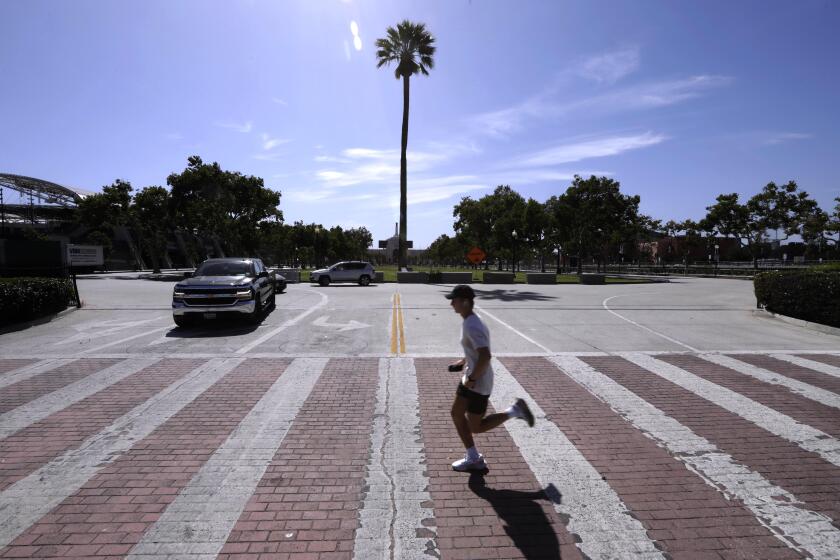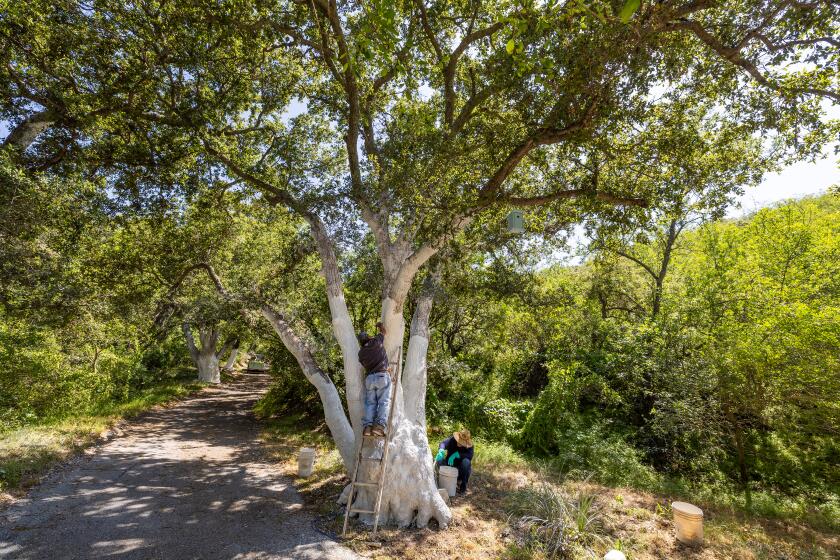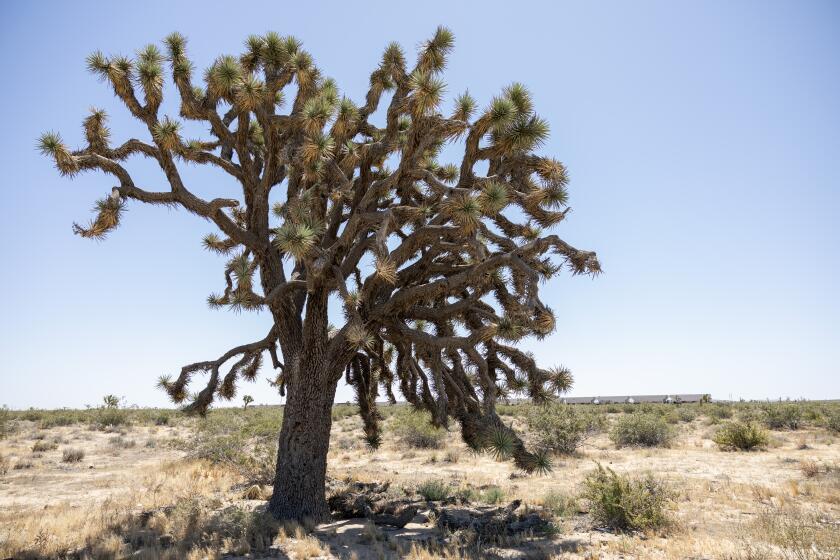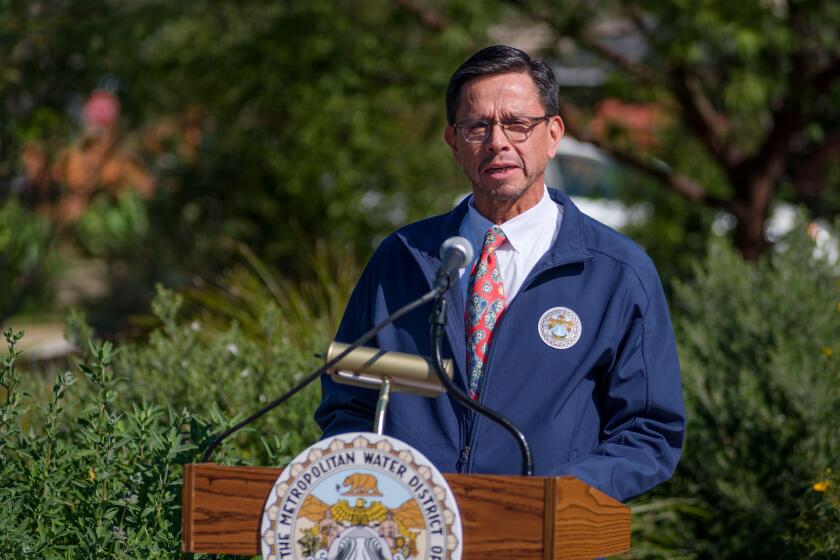A redevelopment plan for Uptown Whittier’s Greenleaf Avenue would remove dozens of ficus trees. (Myung J. Chun / Los Angeles Times)
- Share via
It appeared that the fate of towering ficus trees rooted along a three-block stretch of Whittier’s commercial center was sealed. City Council members in December voted to approve a redesign of the area that would rip out all 83 trees.
Then came the outcry.
Aggressive and impactful reporting on climate change, the environment, health and science.
Residents turned out en masse at subsequent meetings, held a rally and circulated a petition to protest removing the trees in one fell swoop. And it appears the public pressure is working. City officials this month will hold a “study session” — their third since the approval of the $20-million Greenleaf Promenade — examining the plan for the trees and other elements of the project.
Some see the trees as synonymous with the character of the quiet community nestled in eastern Los Angeles County, and praise them for providing shade and gobbling greenhouse gases in a warming world. Others blame the nonnative trees for lifting sidewalks and clogging sewer lines with their roots, or are willing to sacrifice the trees to break ground on a project they believe will bring economic vitality. According to city officials, construction elements, such as required grading, make it impossible to save any of the ficus trees. Some other types of trees that line the street may be salvaged, officials said.
The debate over the trees has divided the community, pitting some business owners against residents — and against one another. A late-April meeting at times turned ugly, with about 80 public speakers passionately expressing conflicting views.
One point of broad agreement is that Uptown Whittier, considered the heart of the city, could use a little love. Its last update was in the 1980s, including renovations after the 1987 Whittier Narrows earthquake that badly damaged the area.
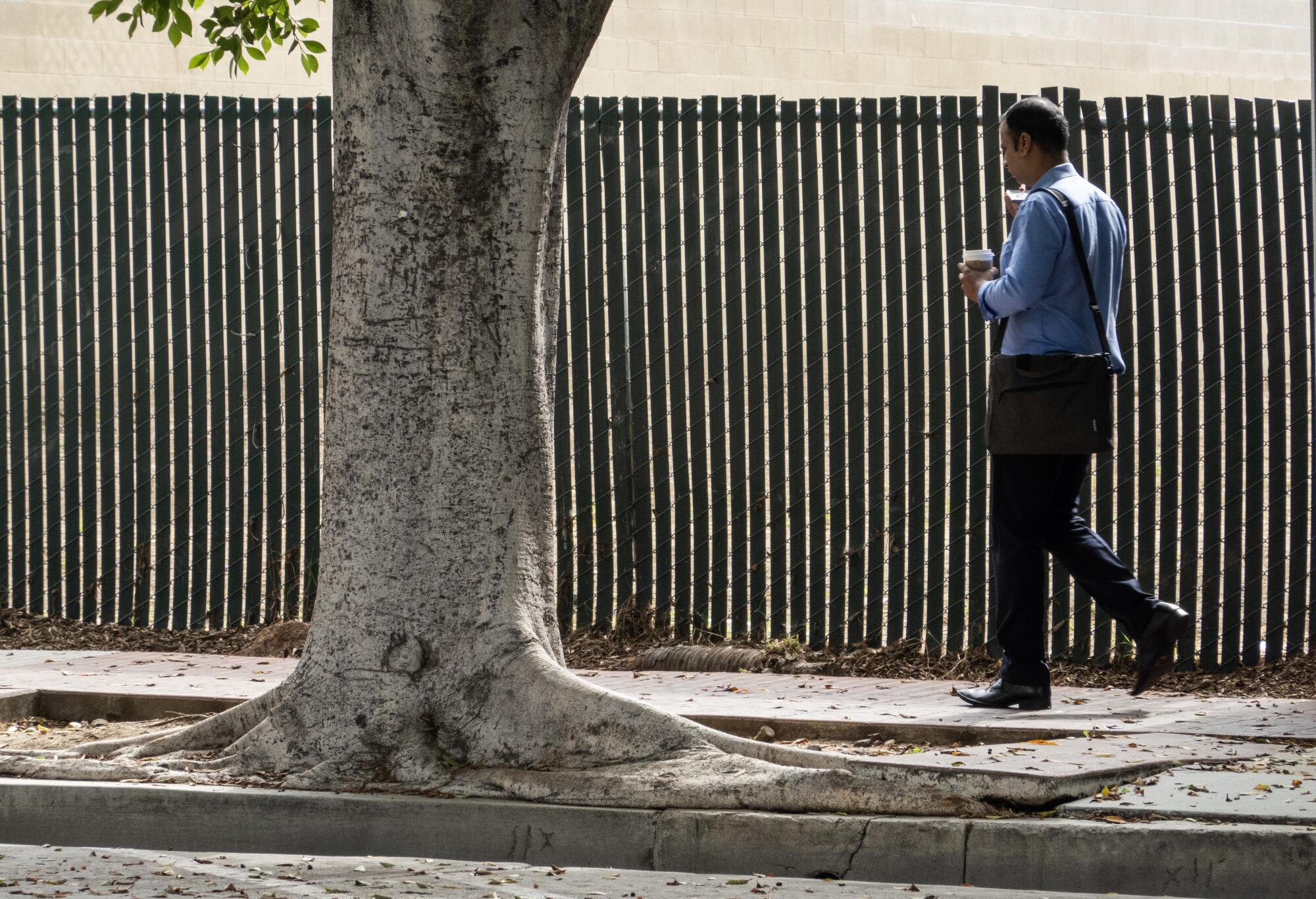
The envisioned promenade stretches from Wardman Street to Hadley Street, along the aptly named Greenleaf Avenue, and includes wider sidewalks, outdoor dining, gathering spaces, street furniture and decorative lighting.
City officials “are committed to revitalizing Uptown Whittier into a thriving, walkable and pedestrian-friendly area for generations of residents to enjoy,” Whittier City Manager Brian Saeki said in a statement. To realize the “long-held vision,” he said, it’s necessary to remove certain trees in the project area.
Cities are being urged to expand their urban tree canopy to mitigate the effects of climate change, but some are replacing mature shady trees with palms.
“We understand the community’s concerns, appreciate the feedback we’ve received,” Saeki said, adding that the city will plant larger replacement trees “wherever possible,” as well as add 39,000 square feet of understory landscaping and 18,000 square feet of new park space.
A similar but smaller pilot project was approved in 2019 but was scuttled by the pandemic, according to city officials. Estimated to cost $3.8 million, the one-block Gardens of Uptown differed in a way some see as crucial: It preserved clusters of ficus trees.
Over the next few years, city officials said, the project morphed and expanded, partially in response to shifting preferences born out of the pandemic. Greenleaf Promenade carries a roughly $20-million price tag.
The goldspotted oak borer is just 14 miles from the Santa Monica Mountains’ 600,000 oak trees and threatens to devastate forests throughout California, harming wildlife and increasing fire risks.
Today, the ficus trees stirring the controversy — believed to date to the late 1960s — create a shaded canopy across the avenue. Some of their benefits and drawbacks are on clear display. Step outside of their outstretched branches on a warm day and prepare to be lashed by the sun. But stroll the sidewalk under them when they’re dropping blueberry-like berries, as they were in May, and expect to step in the organic muck.
It’s not just Whittier wrestling with ficus ambivalence. Beverly Hills clear-cut more than 50 ficus trees as part of a sidewalk renovation project before a judge ordered the city to stop via a preliminary injunction. After the ruling, the city opted to complete an environmental impact report for the project, a process that’s ongoing, said Jamie T. Hall, an attorney representing tree advocates in the case. The fate of 36 trees hangs in the balance.
In 2018, Pasadena city officials held a meeting to gather community input on whether to keep planting ficus trees, as well as how they affected Green Street. Pasadena Now reported at the time that a public works administrator offered assurance that none of the trees lining the street was slated for removal. In March of last year, the volunteer group Pasadena Beautiful Foundation reported planting 30 ficus macrocarpa trees on the street.
Uptown Whittier has retained a small-town vibe. Greenleaf Avenue is lined with mom-and-pop shops, like the more-than-70-years-running Lovell’s Records, interspersed with newer establishments, such as La Sexy Michelada, a bar and restaurant.
Sipping coffee outside Crêpes & Grapes, a cafe on Greenleaf, Mary Gorman-Sullens said the trees provide “ambiance and character.” Gorman-Sullens, president of the nonprofit Whittier Conservancy, said removing them would erase the look and feel people associate with the area.
The trees “give us a sense of place,” Gorman-Sullens said later as she walked a Times reporter through the area.
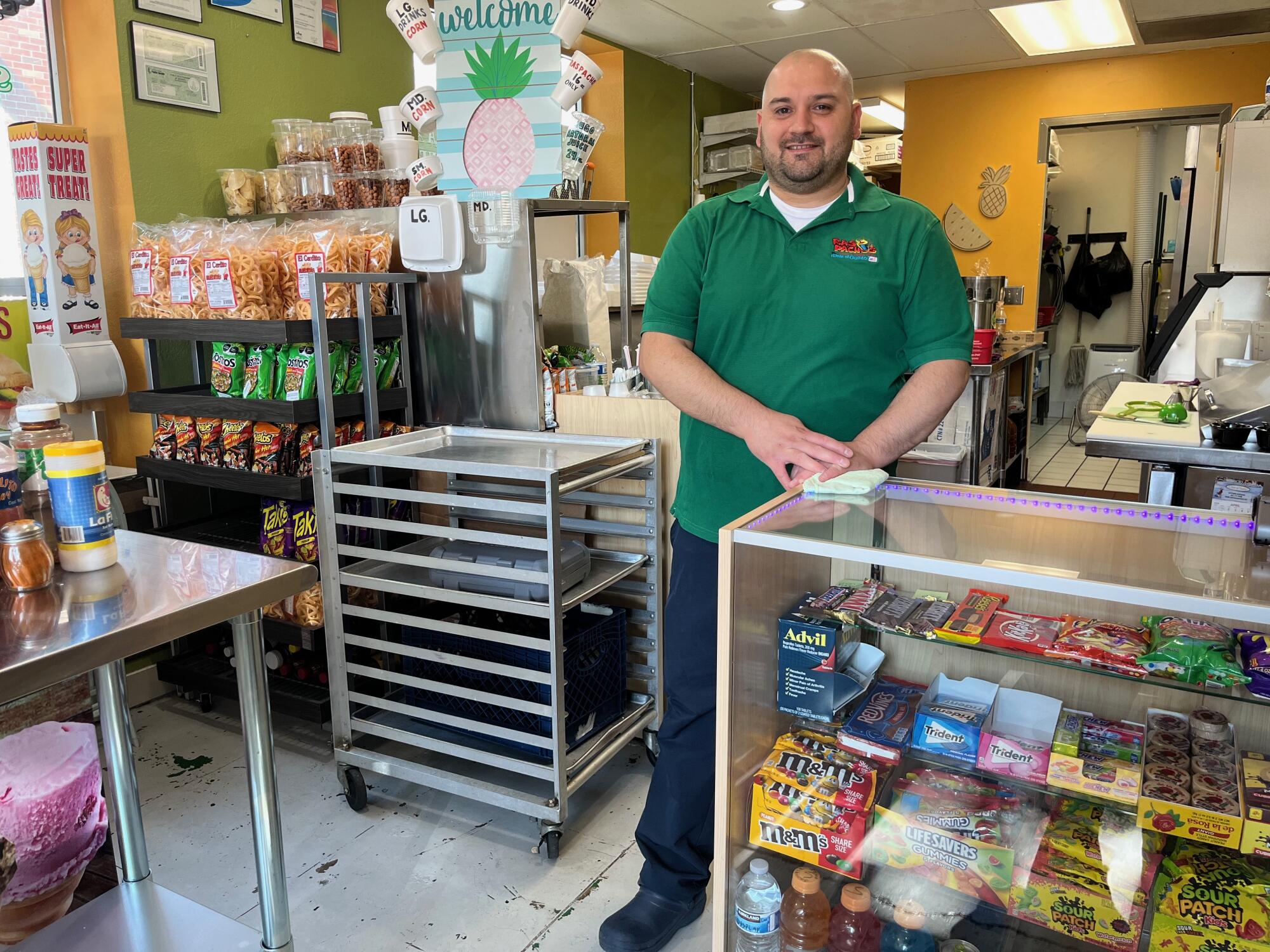
Christian Lomas, owner of La Botanería, which sells shaved ice and juices, said the business opened on Greenleaf two years ago — and sales were fairly low both years.
“I think it would bring a lot more business if it got renovated,” Lomas said.
Lomas added that water drains slowly at the establishment and adding root killer helped, making him believe that the trees may play a role in the blockage.
(Those pushing to preserve the ficus trees dispute that the roots affect the Greenleaf establishments’ pipes.)
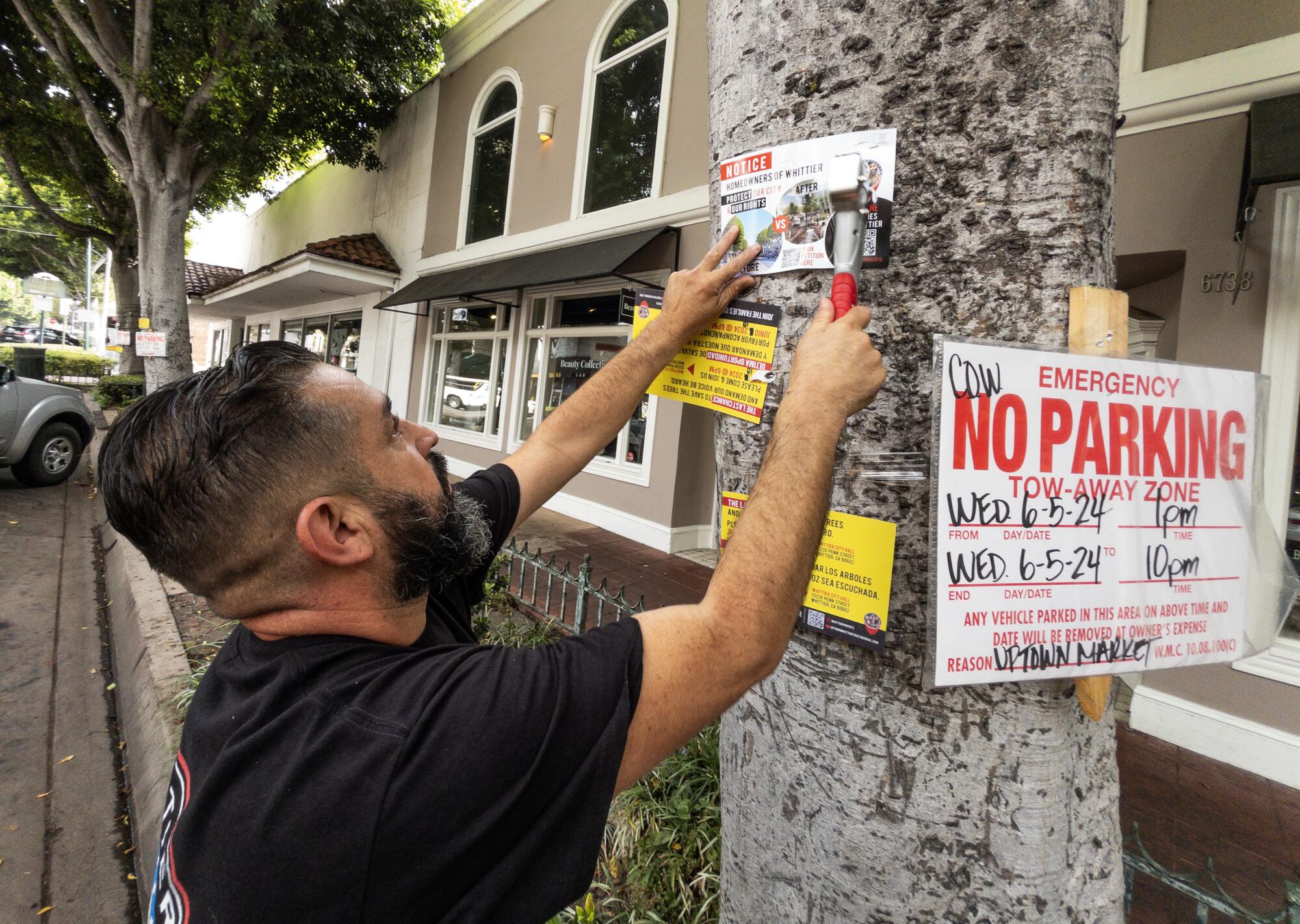
G Gonzalez, a Whittier native who runs a bike shop down the street, expressed a different opinion.
“Just let it be,” said Gonzalez, of G’s Cyclery & Wheels. “Leave it like it is.”
Rebecca Naranjo, 21, who also grew up in Whittier, said she was torn. She can see the appeal of something “new and cool,” but fears it will pave the way for chain businesses.
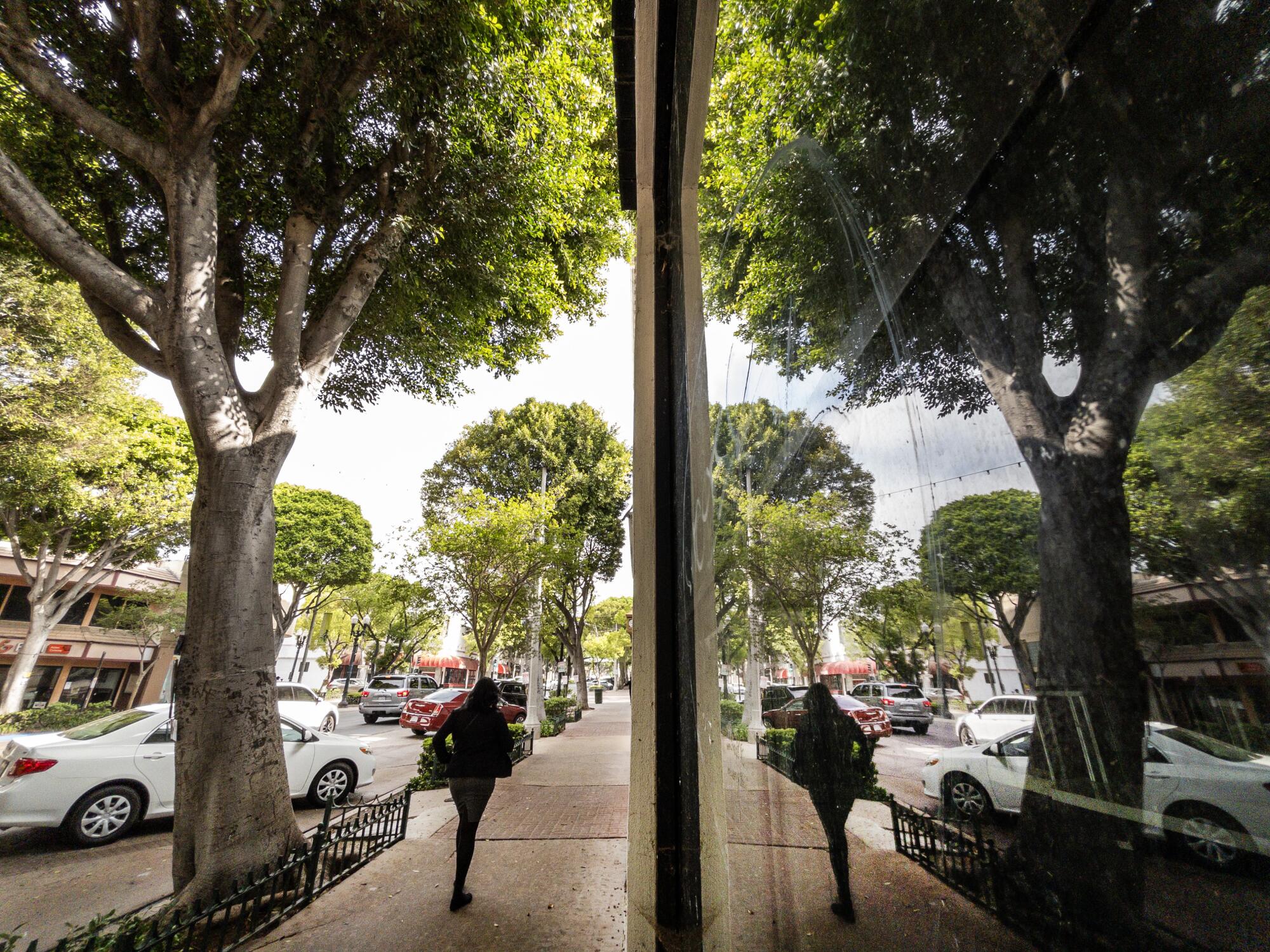
At the last promenade study session, on April 30, the City Council opted to explore phasing in the project and digging into tree replacement options before moving forward.
Councilmember Mary Ann Pacheco, who was elected shortly before the meeting, said she needed more time and information to decide.
“I want to see some options. And I don’t want to see options and then the response of, ‘And this is why we can’t do it,’” she said to applause.
Councilmember Octavio Cesar Martinez, however, suggested the project had been kicked down the road long enough.
“I am convinced my friends who oppose progress at some level wish to freeze Uptown as it is,” said Martinez, whose district includes Uptown. “This will turn Uptown into some sort of strange monument, and monuments almost always lead to mausoleums, which are death.”
Pacheco’s request to keep the discussion going won out.
A solar energy company will soon begin clearing thousands of protected Joshua trees in the Mojave Desert, including many thought to be a century old.
Councilmember Fernando Dutra said he wanted to see what type of trees could be planted, where they’d be placed and what their growth period would be.
“Good projects take time,” he said. “We’ve waited this long.”
A community rally is set to take place shortly before the June 18 meeting.
“We’re not Beverly Hills and we’re not Pasadena,” said Conny McCormack, a longtime Whittier resident who is among those leading the opposition to the tree removal. “We don’t have much else but this beautiful canopy.”
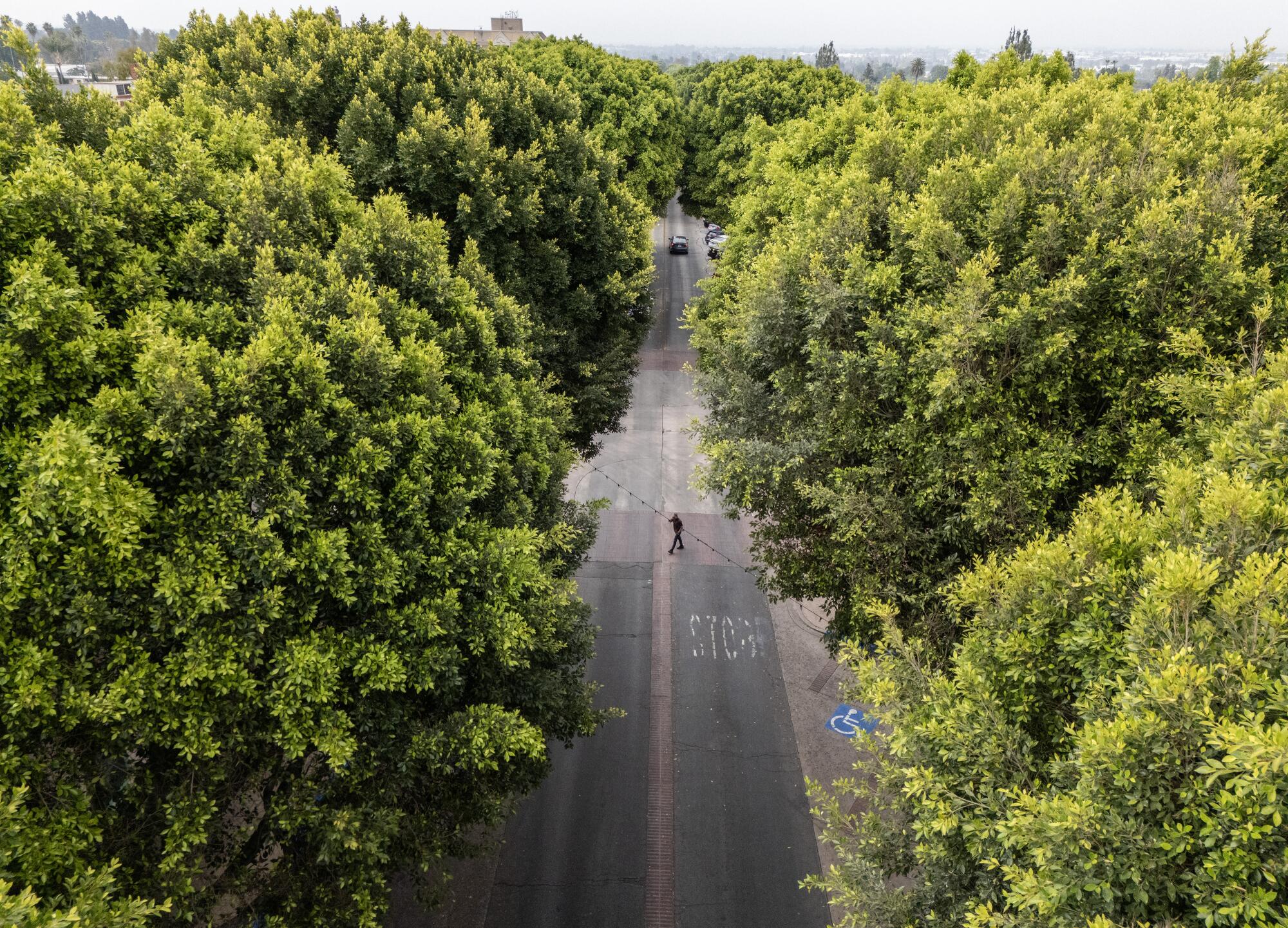
The Metropolitan Water District of Southern California is offering residents up to $500 to plant trees and expand the urban canopy.


